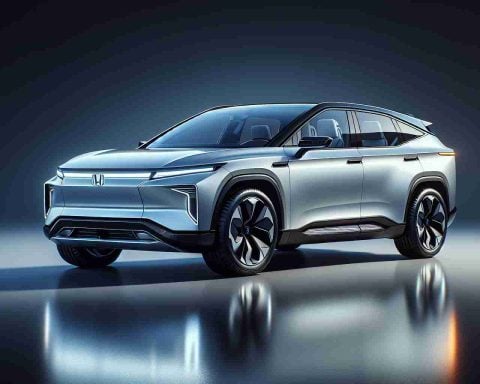- Nvidia has evolved from GPU crafting for video games to a leader in the AI industry.
- The company’s chips are crucial for AI, enabling parallel computations essential for AI tasks.
- Nvidia’s financial growth is extraordinary, with a 2,950% revenue increase in the past decade.
- Analysts project Nvidia’s market dominance to grow, with a market cap goal of $10 trillion by 2030.
- Major tech companies plan substantial investments in AI infrastructure, boosting Nvidia’s prospects.
- While poised for future gains, Nvidia faces risks from market volatility and emerging competition.
The relentless march of innovation has ushered artificial intelligence to the forefront of global technological development, and at its epicenter stands Nvidia. From its nascent days of crafting GPUs for immersive video game graphics, Nvidia has evolved into a formidable powerhouse, poised to ride the colossal wave of AI advancement.
Behind the unyielding demand for Nvidia’s chips lies their transformative ability to execute massive computations in parallel. This capability has proved critical for the explosive growth in AI-driven tasks, from seamless business automation to the creation of next-gen AI models residing within towering data centers.
Nvidia’s financial ascent is nothing short of meteoric. With revenue soaring over 2,950% in the past decade, the firm has cemented its market leader status. Even more striking, its net income has catapulted by an astonishing 14,310%. Such dizzying heights have driven a 23,960% surge in its stock price—an undeniable testament to its unrivaled dominance.
Forecasts suggest this may just be the beginning. As titanic tech giants like Microsoft and Amazon pledge $315 billion by 2025 to bolster AI infrastructure, Nvidia’s role as the main supplier of AI’s essential circuitry remains unchallenged. Its market cap now approaches $3.27 trillion, with analysts like Beth Kindig boldly predicting a leap to $10 trillion by 2030. Nvidia is much more than a supplier of GPUs; it’s cementing its legacy as an AI systems juggernaut.
Yet, every peak entails risks. Recent volatility reminds investors to brace for sudden shifts, as seen when Nvidia’s stock fluctuated dramatically amidst emerging competition. Still, Nvidia’s foundational role in the AI revolution positions it uniquely for future gains, marking it as a beacon in an ever-expanding technological frontier.
Unlocking the Power of Nvidia: The Future of AI and Technology
How Nvidia Drives AI Innovation
Nvidia’s journey from its early GPU development for gaming to its current status as a leader in AI hardware is marked by groundbreaking advancements in parallel computing. Here’s a closer look at how Nvidia executes its transformative role in the AI sector:
1. Parallel Processing Architecture: Nvidia’s GPUs are designed to perform multiple calculations simultaneously, which makes them ideal for training complex AI models. This efficiency is crucial for machine learning, where massive data sets need to be processed.
2. AI Frameworks and Libraries: Through platforms like CUDA and libraries such as cuDNN, Nvidia provides developers with the tools needed to accelerate AI development and deployment.
3. Adaptation to Data Center Needs: Nvidia has focused on developing hardware like the A100 Tensor Core GPU, specific to data center requirements, capable of handling AI workloads with exceptional speed and efficiency.
Real-World Use Cases
1. Healthcare: Nvidia’s AI tools are used for diagnostic imaging, personalized medicine, and drug discovery, significantly reducing time in identifying potential treatments.
2. Autonomous Vehicles: Nvidia’s DRIVE platform is pivotal in developing self-driving technologies by leveraging AI to process sensor data from autonomous vehicles.
3. Climate Modelling: Nvidia’s GPUs help in climate modeling simulations, allowing scientists to predict climate patterns and assess environmental impacts accurately.
Industry Trends and Market Forecasts
The demand for AI-centric hardware is expected to surge as industries digitize, with a projected market growth from $62.35 billion in 2021 to $309.6 billion by 2026 (Mordor Intelligence). AI infrastructure investments by companies like Microsoft and Amazon further push this trend.
Reviews & Comparisons
In terms of AI capability, Nvidia GPUs like the RTX 3080 and 3090 are compared favorably against AMD’s latest offerings in deep learning benchmarks, although AMD is rapidly catching up with its RDNA architecture.
Controversies & Limitations
Nvidia’s meteoric rise isn’t free from challenges. The primary concerns revolve around:
– Supply Chain Constraints: Scalability issues due to chip shortages.
– Environmental Impact: High energy consumption by data centers represents a growing sustainability challenge.
Security & Sustainability
Nvidia is actively pursuing sustainability with a focus on reducing the carbon footprint of their products and promoting energy-efficient designs like the Ampere architecture. Security measures are tightly integrated into their hardware to protect AI models and data integrity.
Insights & Predictions
Industry experts predict Nvidia will play a crucial role in the evolution of edge computing, taking AI processing closer to where data is generated, minimizing latency, and improving speed.
Pros & Cons Overview
Pros:
– Cutting-edge AI performance
– Strong industry partnerships
– Expansive ecosystem for developers
Cons:
– High cost of hardware
– Intense competition from rivals
Actionable Recommendations
1. Invest in Nvidia for AI: With its leadership in AI technology, Nvidia presents a strong investment opportunity. Ensure portfolio diversification to balance risks.
2. Implement Nvidia Solutions: For businesses looking to implement AI, Nvidia offers robust solutions via their frameworks and hardware. Early adoption can provide competitive advantages.
3. Stay Updated on Competition: As contenders like AMD and Intel enhance their AI offerings, keep an eye on comparative technology advancements.
For more information on Nvidia, check the official website: link name.
Nvidia stands at the forefront of technological innovation, poised for continued influence and growth in the AI sector. For businesses and investors, understanding its capabilities and trends is crucial for leveraging future opportunities.


















